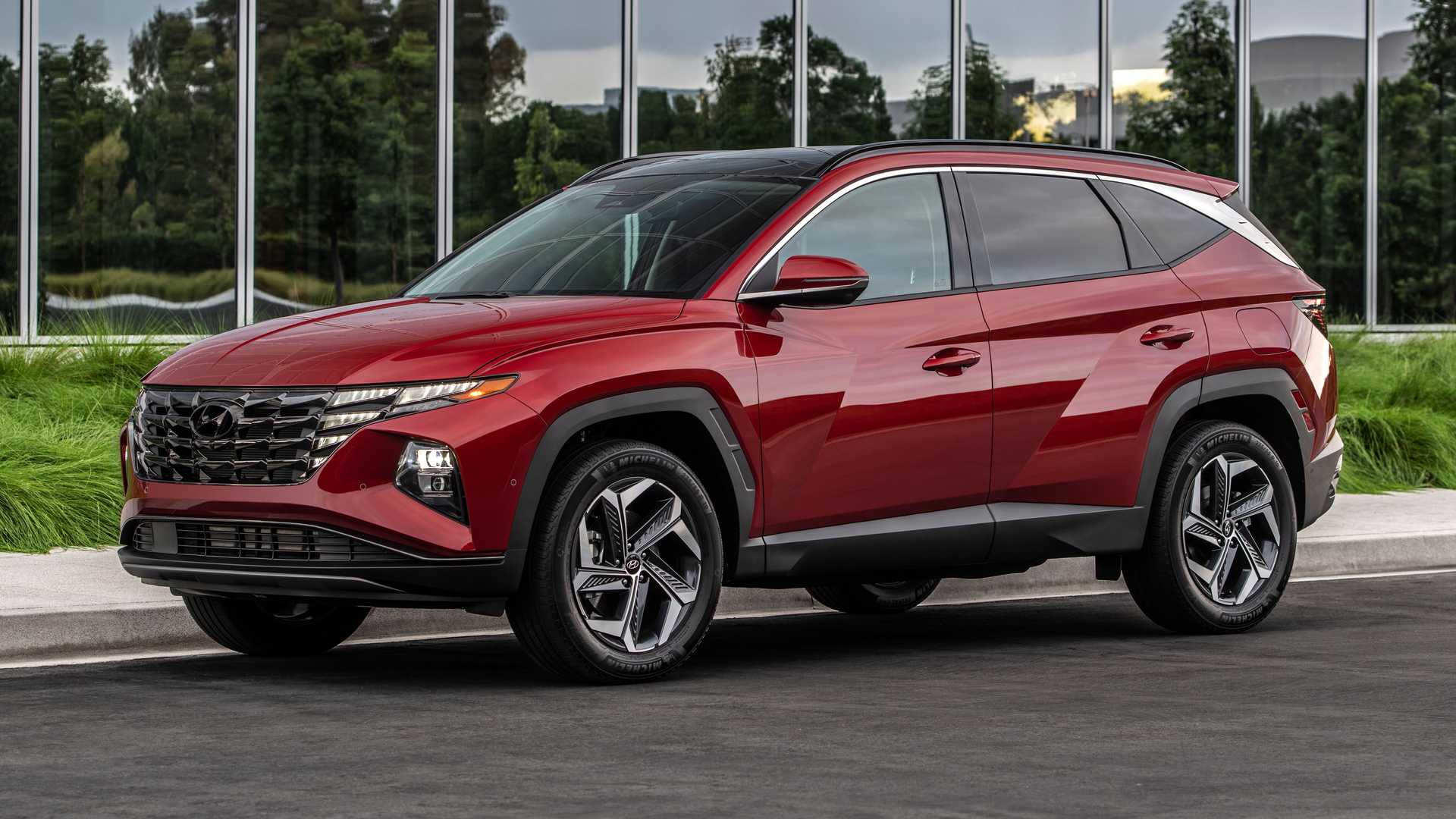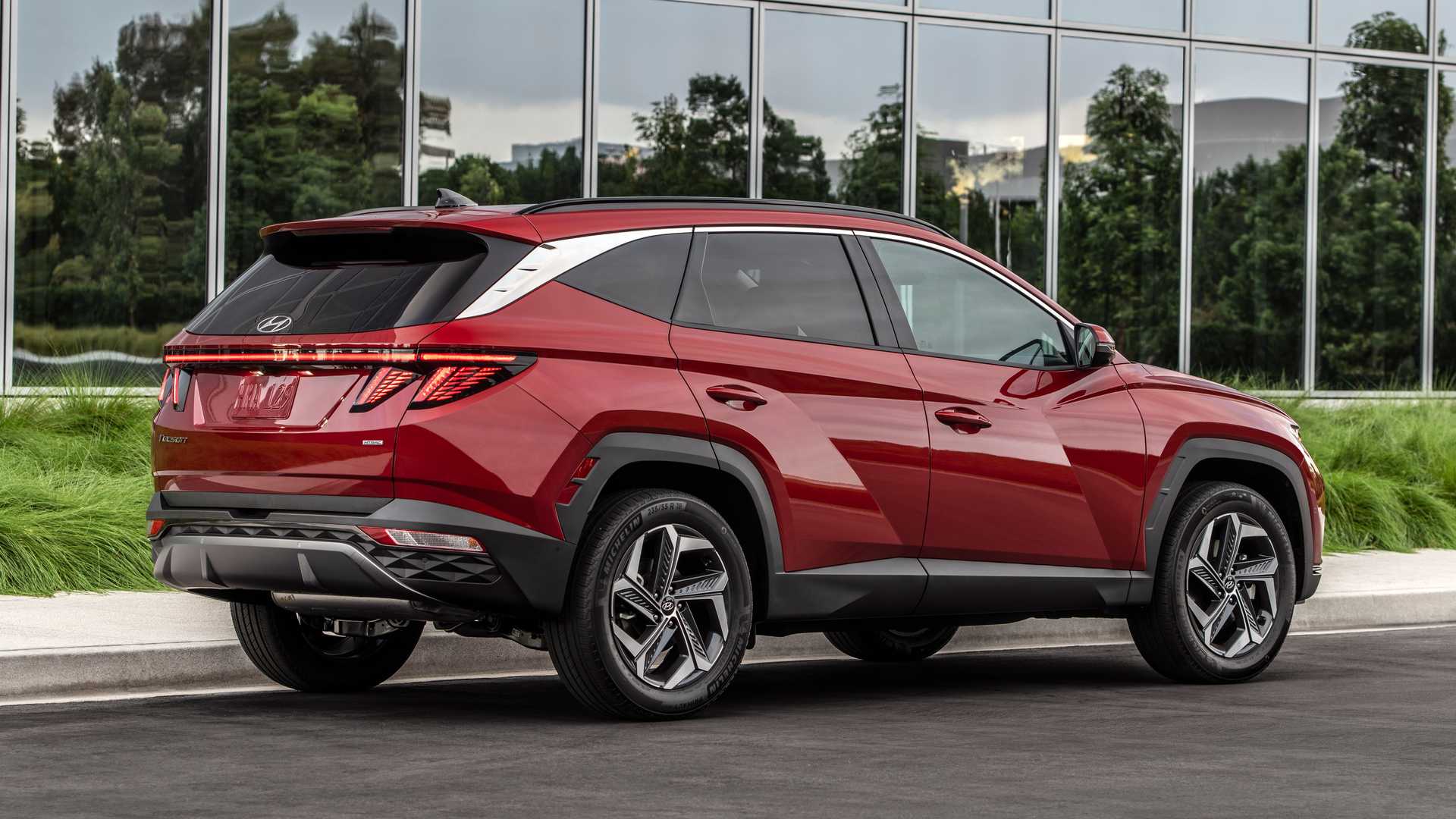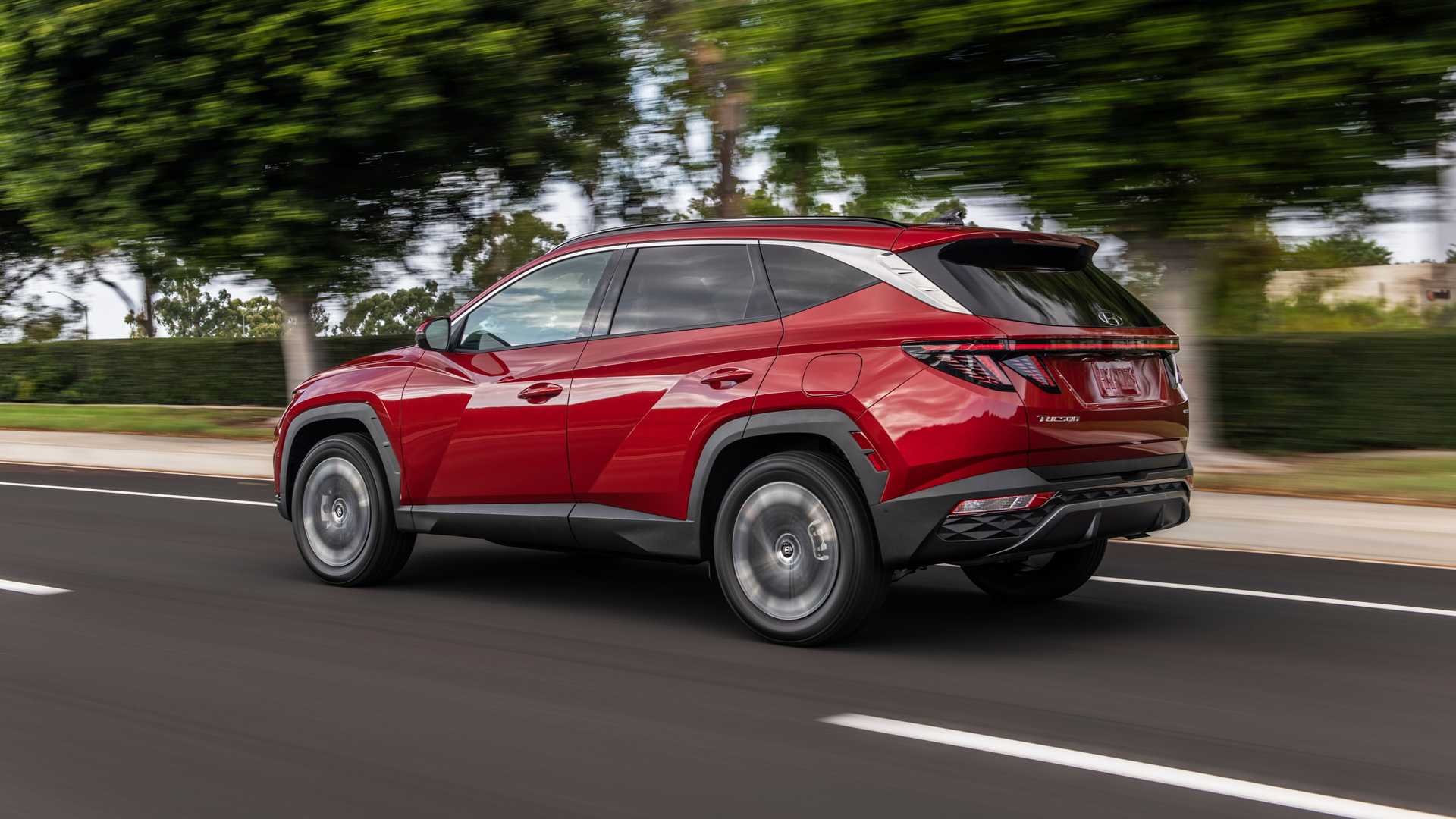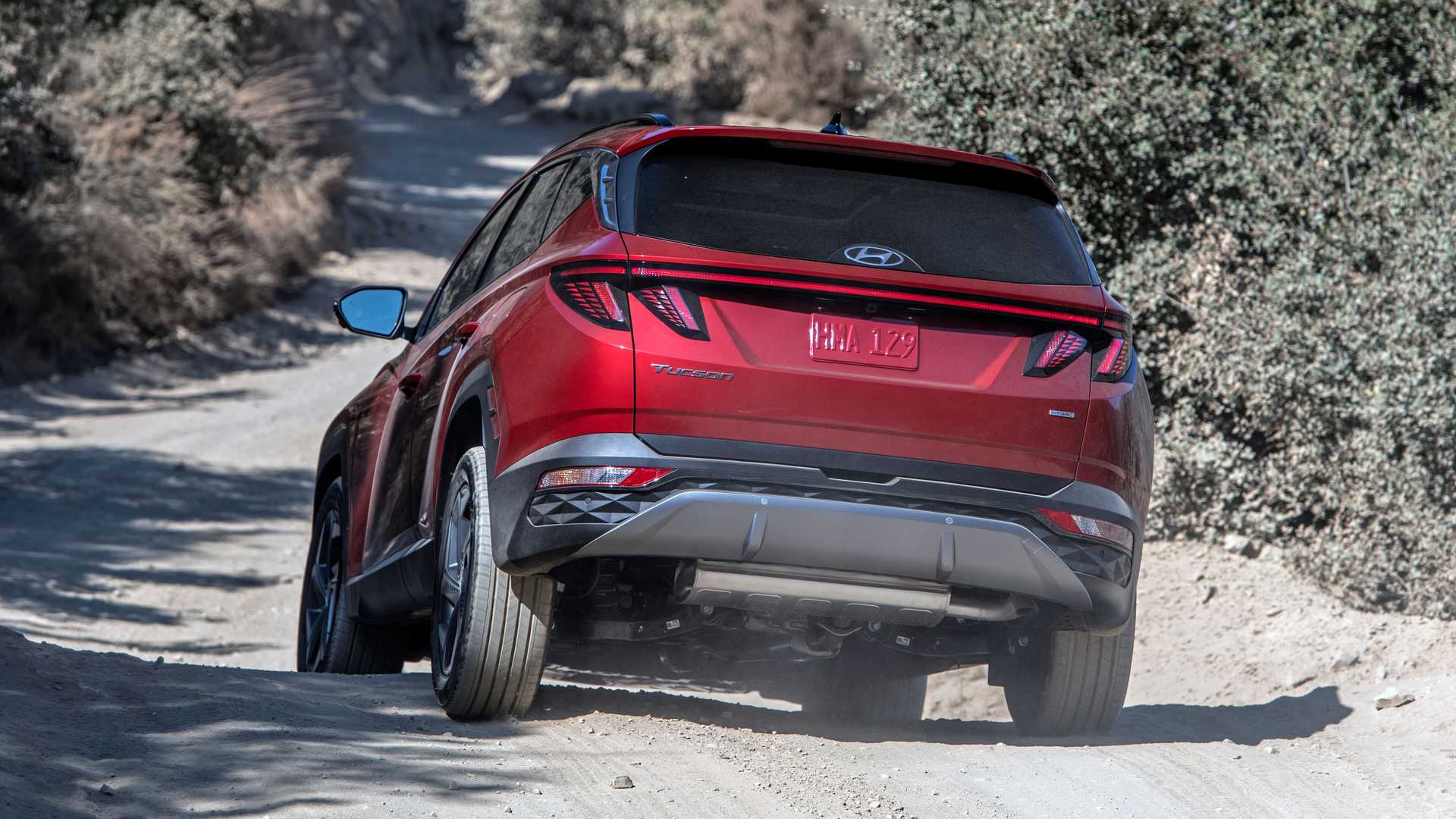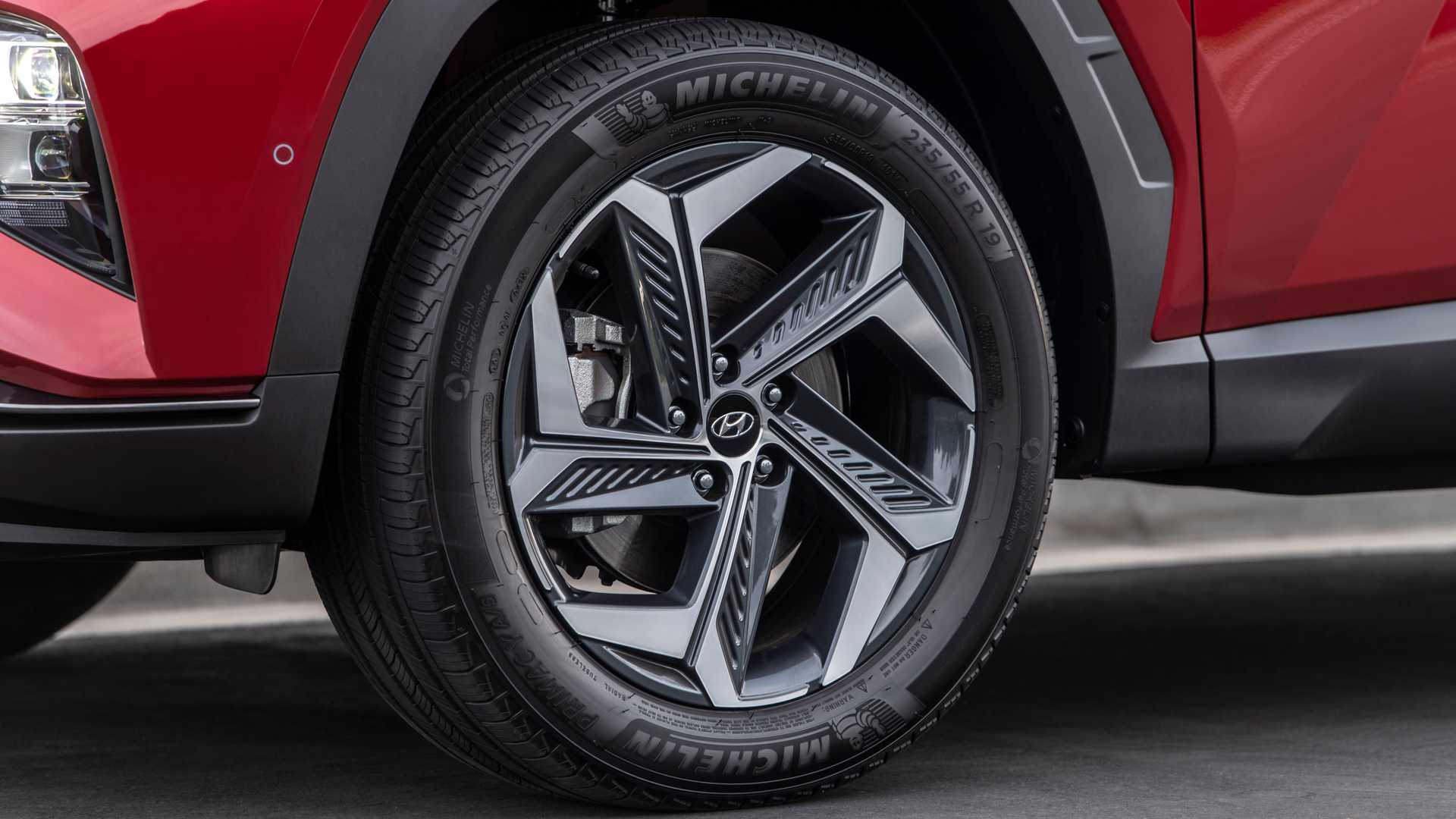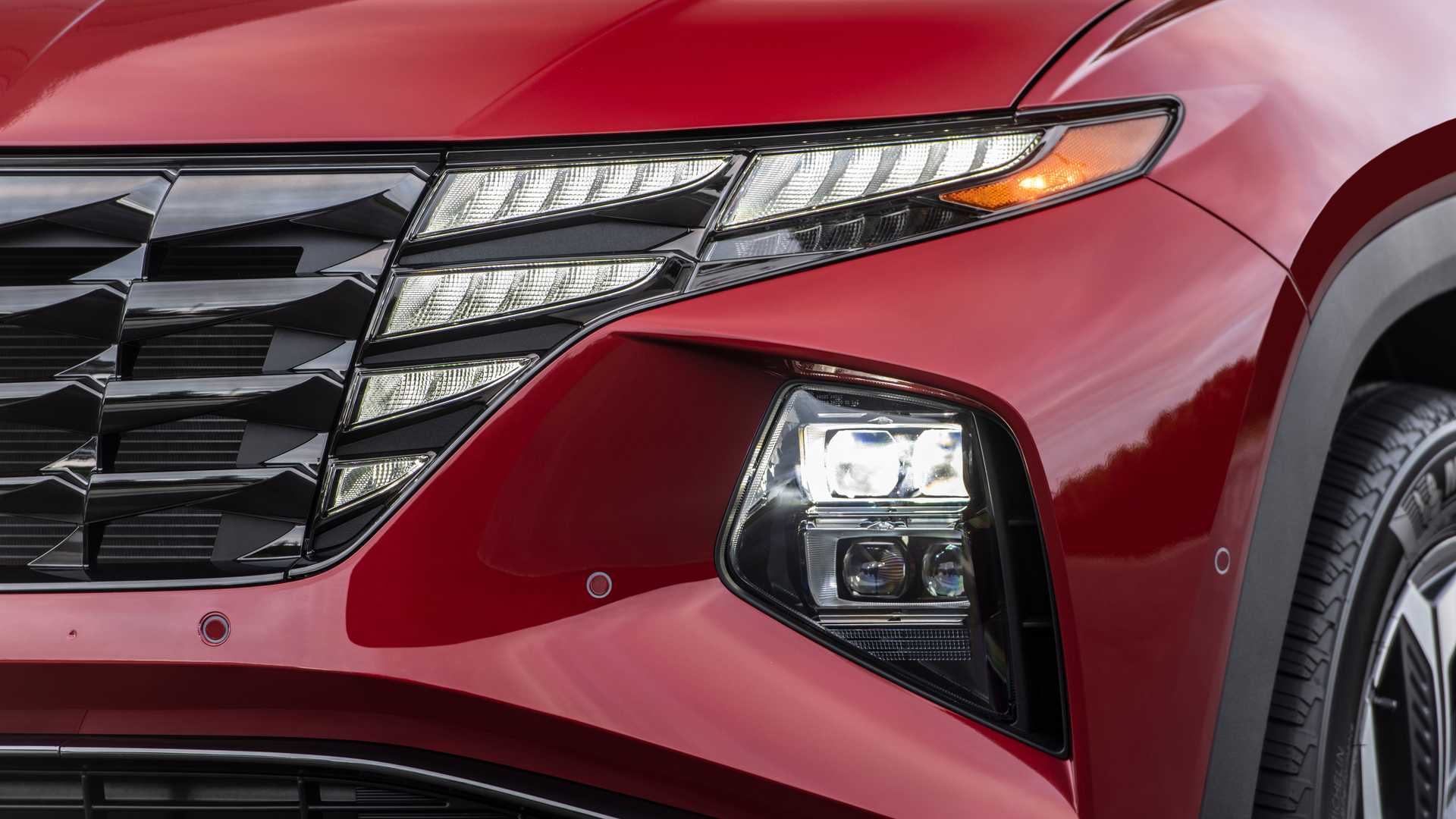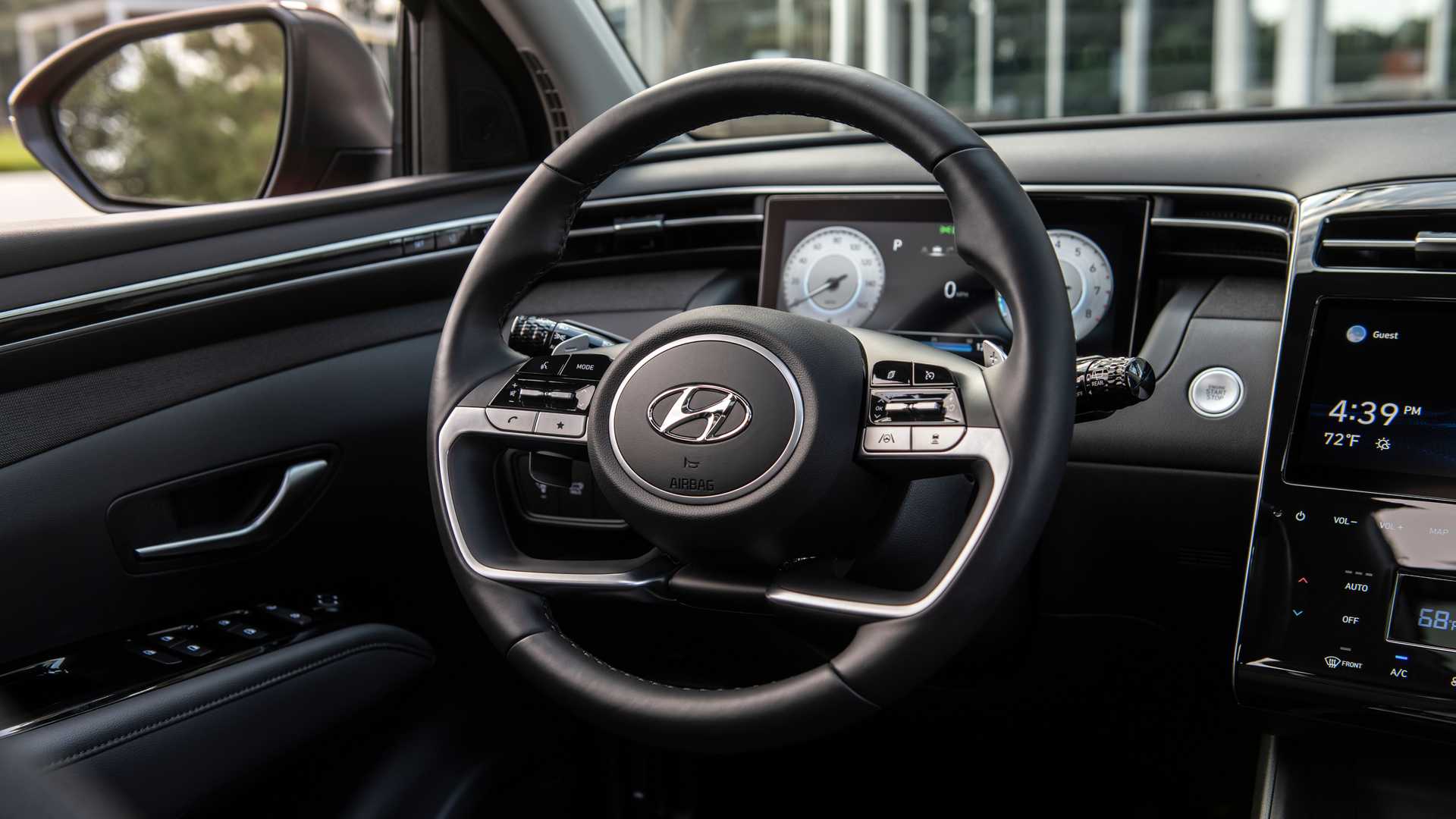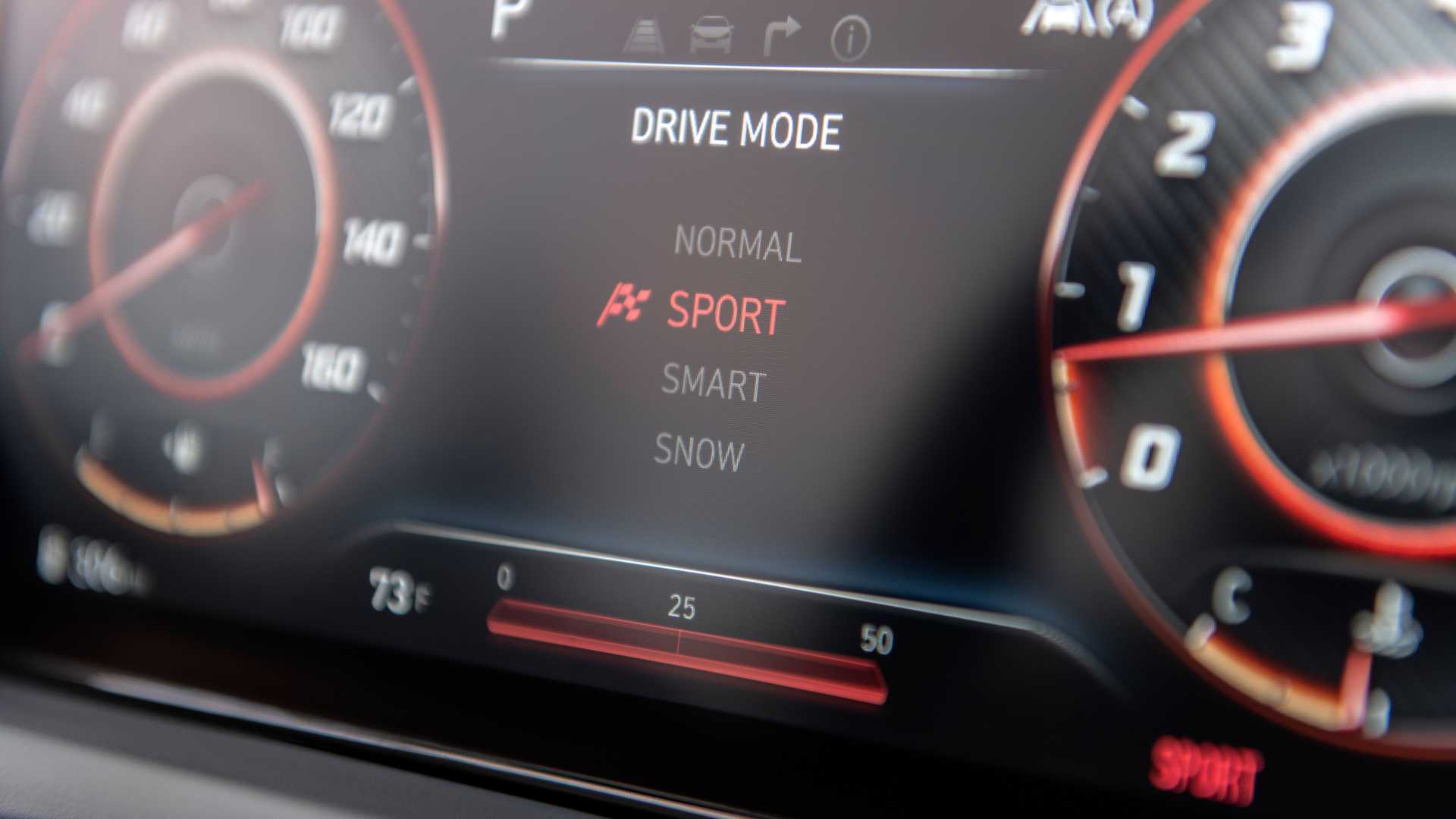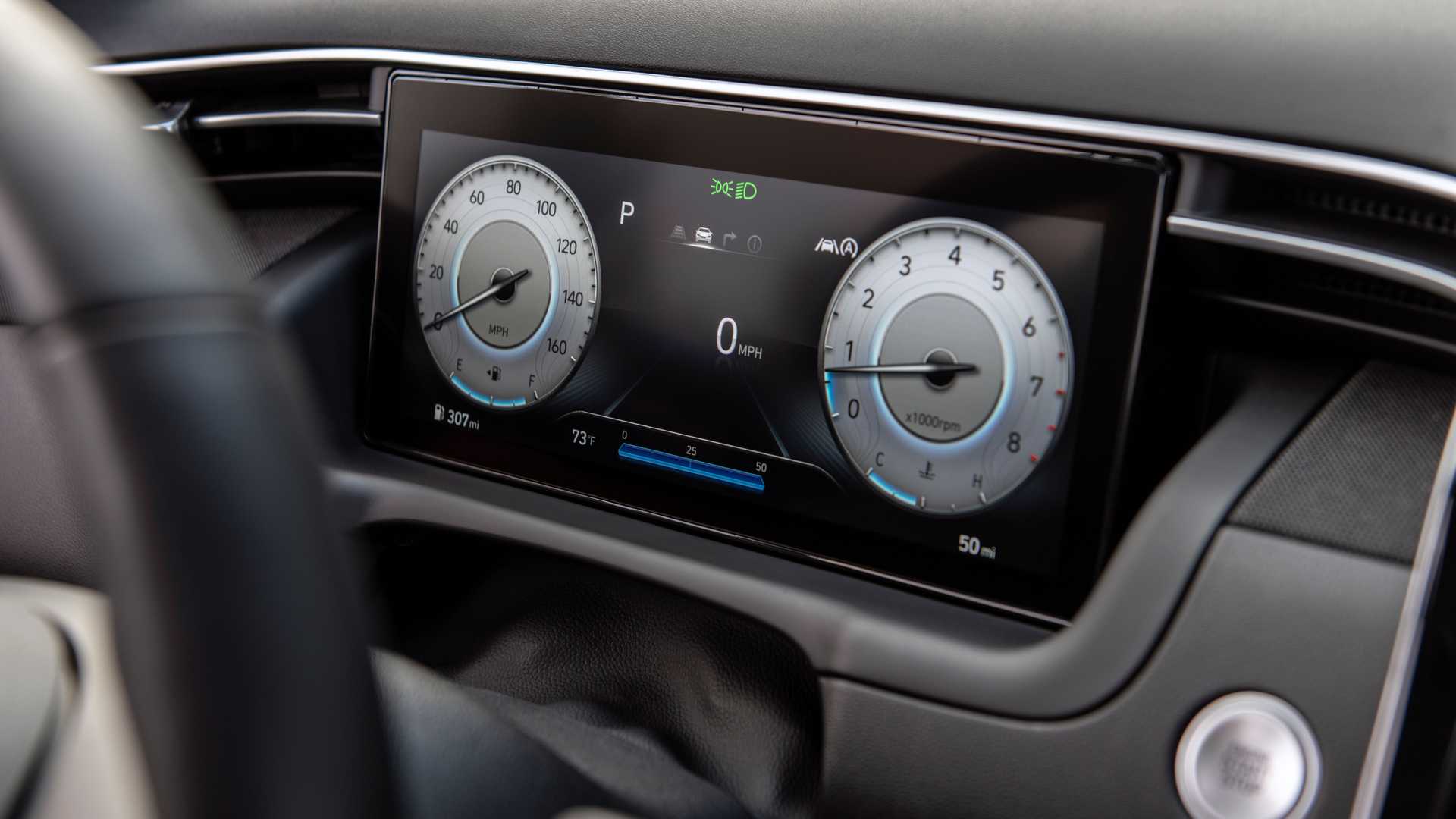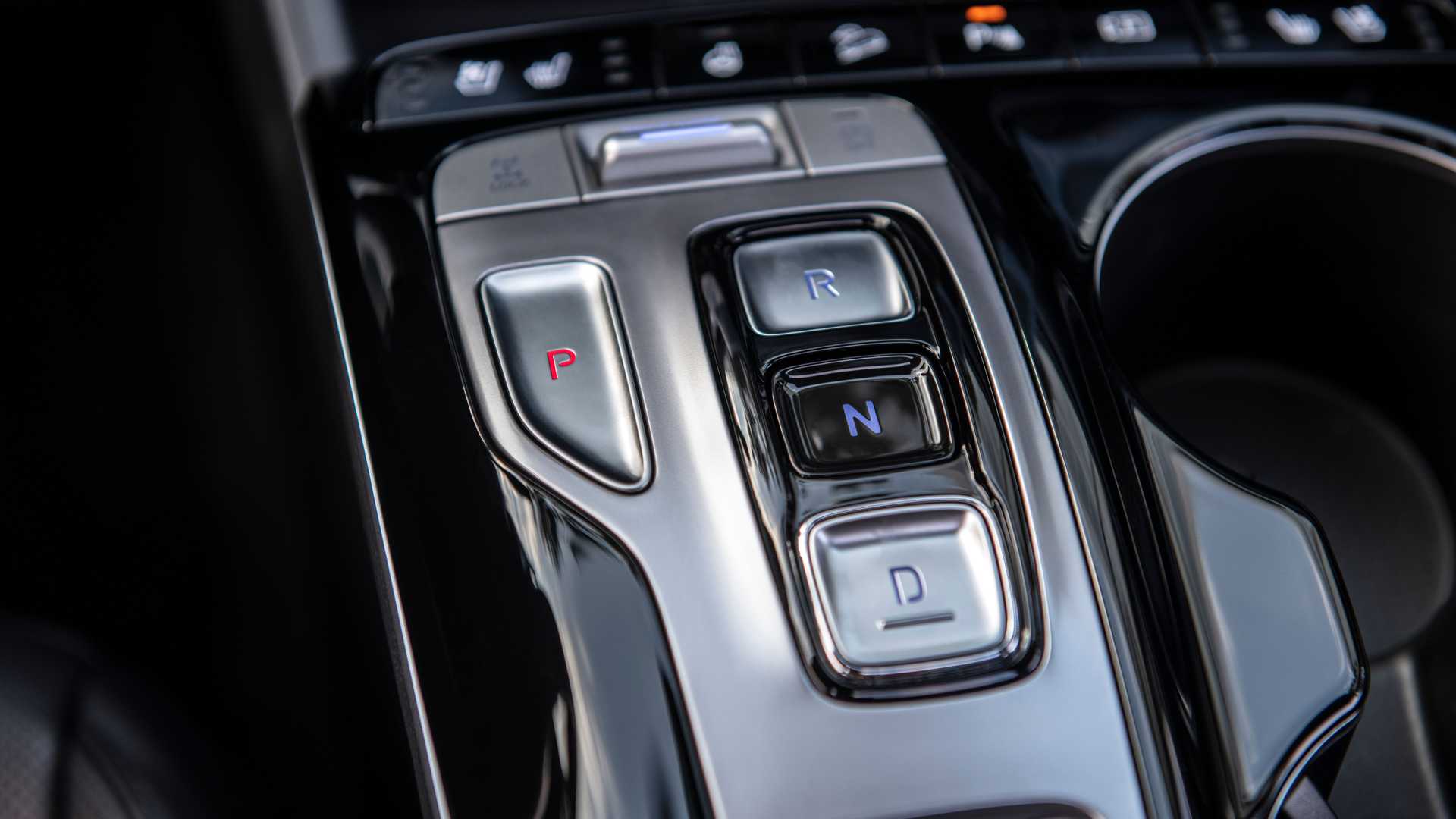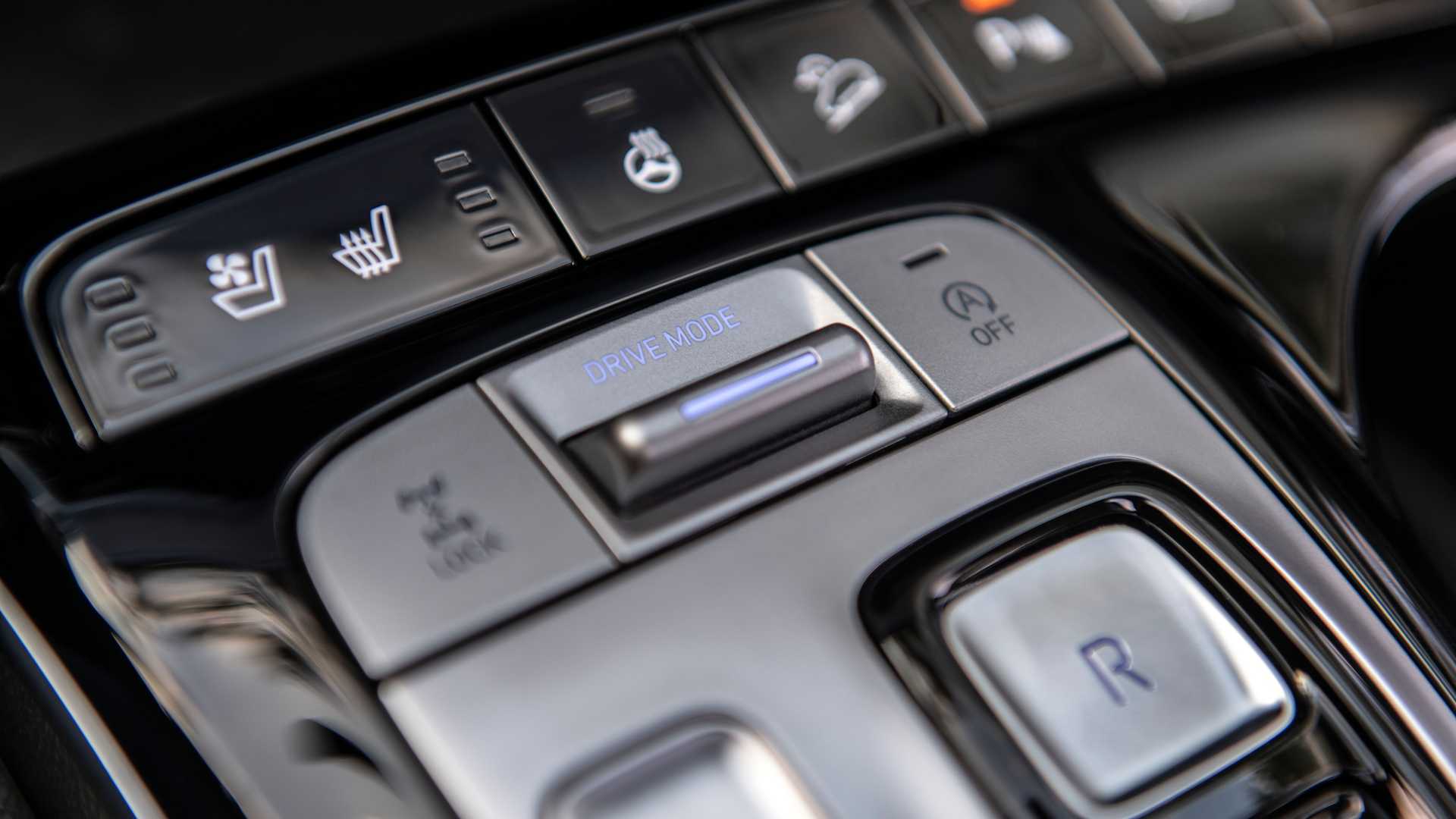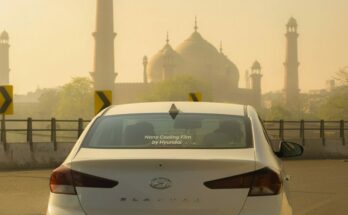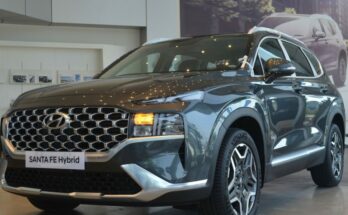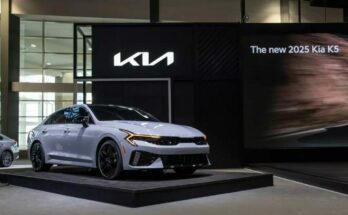Hyundai has unveiled the all new Tucson SUV to U.S. media in West Hollywood, California. The latest generation which made its global debut in September possesses the brand’s latest Sensuous Sportiness global design identity.
Related: All New 2021 Hyundai Tucson Unveiled
Thomas Schemera, Executive Vice President & Head of Product Division at Hyundai Motor Group said:
“Our new Tucson represents the future of Hyundai’s full-spectrum eco-powertrain approach, offering internal combustion, hybrid and plug-in hybrid models in a high-volume compact SUV. With all-wheel-drive capability now added to new hybrid SUV platforms, customers no longer need to choose between all-road, all-weather capability and outstanding efficiency.”
As seen before, the new exterior styling embodies what Hyundai designers call ‘Parametric Dynamics’ with kinetic, jewel-like surface detailing emphasizing the Tucson’s distinct identity in a competitive SUV segment.
The classy interior offers three new technologies, including a 10.25-inch full-touch screen exempt of hard buttons, a hoodless digital gauge cluster, and multi-air ventilation, a temperature-adjusting system providing diffused airflow on the front passengers. This indirect, diffusing ventilation system reduces potentially unpleasant airflow and is unique in the automotive industry. Plus ambient mood lighting is adjustable to 64 colors in 10 levels of brightness to enhance the fascination.
The new Hyundai Tucson for the U.S. market offers LWB version of the global platform, which is longer, wider, taller, and has a longer wheelbase than the previous generation. Moreover, passenger volume increases by six cubic feet, to 108.2 cubic feet, and cargo volume has increased by 7.7 cubic feet, to 38.7 cubic feet.
In terms of engines, the new Tucson offers both a Smartstream™ 2.5-liter, direct-injected and multi-port-injected gasoline engine as well as 1.6-liter, direct-injected, turbocharged hybrid and plug-in hybrid powertrains. The new Smartstream 2.5-liter engine, with high-efficiency combustion, cooled EGR and an optimized ITMS cooling system, boasts a generous 187 hp of power and 242Nm of torque, with a targeted combined fuel economy of 28 mpg (12km/l) with front-wheel drive. This 2.5-liter engine is paired to an 8-speed automatic transmission for excellent efficiency and acceleration.
Related: Hyundai Tucson- New vs Old
Tucson offers Hyundai’s HTRAC® All-Wheel-Drive (AWD) that was developed as a multi-mode system, providing an electronic, variable-torque-split clutch with active torque control between the front and rear axles.
The Hybrid powertrain consist of 1.6-liter turbocharged gasoline engine that produces 177 hp of power and 264Nm of torque, with an estimated 226 total system combined horsepower. The hybrid also produces an estimated 350Nm of torque from the combined hybrid powertrain, with a 44.2 kW electric motor and a 1.49 kWh battery pack. The Hybrid powertrain delivers this power through an HEV-tuned 6-speed automatic transmission for smooth, quiet and efficient performance. Combined, this hybrid powertrain is 30% more fuel efficient than the standard gasoline engine, with 20% more torque for effortless daily driving. This superb efficiency also provides for over 500 miles (804km) of range before refueling for greater driving convenience.
Related: Speculative Renderings of Next Gen Kia Sportage
Both these new powertrain options use cutting-edge engine technology in the form of Continuously Variable Valve Duration (CVVD). This innovative new valve duration technology continually optimizes valve opening duration for optimal power, efficiency and emissions with minimized compromise in key measures of engine performance.
Furthermore Tucson hybrid models feature Hyundai’s e-handling technology, which precisely applies electric motor torque control according to dynamic inputs and road conditions to improve cornering performance for a new level of fun-to-drive dynamics. As the Tucson hybrid turns-in to a corner, the electric motor system applies precise incremental braking force to the front wheels, increasing their tire contact patch on the road surface for enhanced traction and steering response while initiating turn-in. Then, as the vehicle moves to exit the corner, the electric motor applies precise torque to the rear axle, increasing the rear tire contact patches for enhanced traction and control accelerating out of the corner.
Related: All New Hyundai Tucson Reaching Dealerships in South Korea
The all new Hyundai Tucson gasoline and hybrid models will go on sale in U.S. market in spring 2021, with plug-in models to be available in summer 2021.
The all new Hyundai Tucson

A computer animation professional with over 23 years of industry experience having served in leading organizations, TV channels & production facilities in Pakistan. An avid car enthusiast and petrolhead with an affection to deliver quality content to help shape opinions. Formerly written for PakWheels as well as major publications including Dawn. Founder of CarSpiritPK.com






